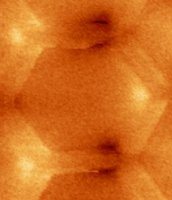Scientists Consider Magnets as Neural Network Processors
Researchers at the Imperial College in London believes that magnets could be used to develop future processors with far greater processing capacity than today's CPUs.
According to a study published in the journal Science, a honeycomb-pattern of tiny, nano-sized magnets that are submerged in a material known as spin ice could solve a complex computational problem in a single step. In fact, clusters of such magnet arrays function similar to a neural network: It is more "similar to how our brains work than to the way in which traditional computers process information," the researchers said.
Exploiting the potential of magnets gets more difficult the closer they are located to each other as they interfere with their magnetic fields, the scientists found that their honeycomb patterns create competition between magnets and "reduces the problems caused by these interactions by two-thirds." It is good enough to store computable information and contents can be read by measuring the magnet's electrical resistance.
So far, the researchers have succeeded in reading and writing data, but there has been no information about the data transfer rates. However, it seems as if speed isn't the key problem yet as their operating temperature is far more critical: At this time, the magnets only function well and "arrange themselves into patterns" at a temperature of -223 degrees Celsius. "This changes their resistance to an electrical current so that if one is passed through the material, this produces a characteristic measurement that the scientists can identify," a press release stated.
"Electronics manufacturers are trying all the time to squeeze more data into the same devices, or the same data into a tinier space for handheld devices like smart phones and mobile computers," said research author Will Branford. "However, the innate interaction between magnets has so far limited what they can do. In some new types of memory, manufacturers try to avoid the limitations of magnetism by avoiding using magnets altogether, using things like ferroelectric (flash) memory, memristors or antiferromagnets instead. However, these solutions are slow, expensive or hard to read out. Our philosophy is to harness the magnetic interactions, making them work in our favor."
Honeycomb magnet processors are very much science fiction at this point. The researchers said that they are not even able to build a prototype that would allow them to control a computational process. However, they believe that the technology could be available within ten to fifteen years.
Get Tom's Hardware's best news and in-depth reviews, straight to your inbox.

Douglas Perry was a freelance writer for Tom's Hardware covering semiconductors, storage technology, quantum computing, and processor power delivery. He has authored several books and is currently an editor for The Oregonian/OregonLive.
-
soloburrito Neural Network Processors = learning computersReply
http://www.youtube.com/watch?v=h8ZaH5zLLvw -
kcorp2003 soloburritoNeural Network Processors = learning computershttp://www.youtube.com/watch?v=h8ZaH5zLLvwReply
I actually guess what this link was about. and i was right :)
fancy words.
-
michalmierzwa Could be, should be, would be... speculative. How about a prototype to catch news headlinesReply -
stingstang Tom's forgot the end of the article.Reply
However, they believe that the technology could be available within ten to fifteen years...with billions of dollars of funding they'll never get. -
photonboy There's simply no point to this line of research.Reply
Advances in computers are slow and incremental, building on existing technology.
And "being more like how our own brains work" doesn't mean you can create an efficient CPU out of it.
This is right up there with trying to store information in the spins of atoms.
What we really need magnets for is RAM that does not need power to keep the memory stored. It's called "MRAM" and it's actually the next big thing once they can get the speeds up and the costs down but that's probably at least ten years away. -
gm0n3y "Scientists Consider Magnets as Neural Network Processors... still don't know how they work."Reply
/miracles -
annymmo What about using metamaterials to make the magnets void interfering with each other when we don't want them.Reply
